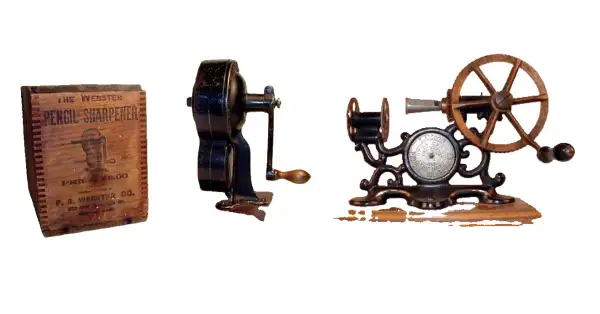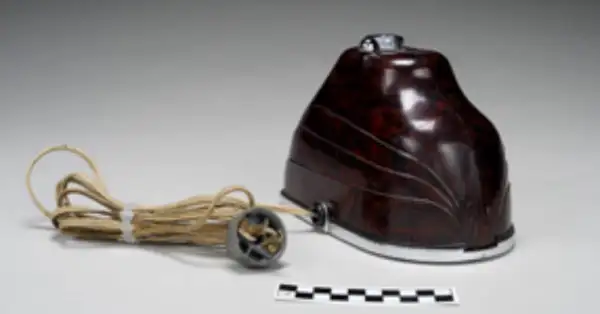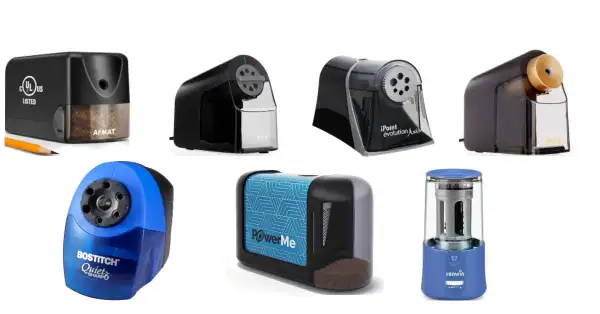In the world of stationery, one humble tool has played a significant role in ensuring the sharpness and precision of our writing instruments – the pencil sharpener.
This often-overlooked device has a fascinating history, evolving from rudimentary designs to sophisticated marvels of engineering.
In this article, we will delve into the intriguing history of the pencil sharpener, exploring its origins, innovations, and its enduring relevance in the digital age.
History of the Pencil Sharpener
The history of pencil sharpeners dates back to the early 19th century. In 1828, French mathematician Bernard Lassimonne patented the first pencil sharpener, which had small metal files set at 90 degrees in a block of wood

In the 1830s and 1840s, some French people, all based in Paris, were engaged in the construction of simple pencil sharpening tools, like François Joseph Lahausse.
These devices were partially sold, but without supra-regional significance. In 1847, the French nobleman Thierry des Estivaux invented a simple handheld pencil sharpener in its recognizable modern form. This is the oldest pencil sharpener that has surviving examples.
The first American pencil sharpener was patented by Walter Kittredge Foster. In 1904, the Olcott Climax Pencil Sharpener was the first sharpener with a cylindrical cutter and spiral cutting edges on the market.

While electric pencil sharpeners were actually invented around 1910, they weren’t commercially produced until 1917 by a company called A.B. Dick.
how has the pencil sharpener design evolved over time
The pencil sharpener design has evolved significantly over time. Here are some of the key developments:
Early 19th century: The first pencil sharpener was invented by French mathematician Bernard Lassimonne in 1828. It had small metal files set at 90 degrees in a block of wood.
1830s and 1840s: Some French people, all based in Paris, were engaged in the construction of simple pencil sharpening tools, like François Joseph Lahausse. These devices were partially sold, but without supra-regional significance.
1847: The French nobleman Thierry des Estivaux invented a simple handheld pencil sharpener in its recognizable modern form.
1855: The first American pencil sharpener was patented by Walter Kittredge Foster of Bangor, Maine.
Late 19th century: Pencil sharpeners with various mechanisms had been developed and put on the market. These devices were often heavy and intended for use in offices. Examples are the Perfect Pencil Pointer (Goodell. Co.), the GEM Pencil Sharpener (by Gould & Cook Co.), the Planetary Pencil Sharpener (A. B. Dick Co.), all from the US or the Jupiter (Guhl & Harbeck Co.) from Germany.
1904: The Olcott Climax Pencil Sharpener was the first sharpener with a cylindrical cutter and spiral cutting edges on the market.
Early 20th century: Electric pencil sharpeners were invented around 1910, but they weren’t commercially produced until 1917 by a company called A.B. Dick.

Overall, the pencil sharpener design has evolved from simple handheld sharpeners to more complex and efficient sharpeners with various mechanisms. The introduction of electric sharpeners has made the process of sharpening pencils quicker and more convenient.
evolution of the pencil sharpener design
| Century | Year | Inventor/Development | Description |
|---|---|---|---|
| Early 19th century | 1828 | Bernard Lassimonne | First pencil sharpener with small metal files set at 90 degrees in a block of wood. |
| 1830s and 1840s | 1830s-40s | François Joseph Lahausse and others in Paris | Construction of simple pencil sharpening tools, with limited sales and regional impact. |
| 1847 | 1847 | Thierry des Estivaux | Invented a simple handheld pencil sharpener in its recognizable modern form. |
| 1855 | 1855 | Walter Kittredge Foster (US) | Patented the first American pencil sharpener in Bangor, Maine. |
| Late 19th century | Late 1800s | Various manufacturers (US and Germany) | Development of various pencil sharpeners, often heavy and office-oriented, including Perfect Pencil Pointer, GEM Pencil Sharpener, Planetary Pencil Sharpener, and Jupiter. |
| Early 20th century | 1904 | Olcott Climax Pencil Sharpener | Introduced the first sharpener with a cylindrical cutter and spiral cutting edges on the market. |
| Early 20th century | 1910-1917 | A.B. Dick (US) | Invention and commercial production of electric pencil sharpeners. |
what are the different types of pencil sharpeners
There are several types of pencil sharpeners available in the market. Here are some of the most common types:
- Blade Sharpeners: These sharpeners have a sharp blade that shaves the wood and lead of the pencil to create a fine point. They are simple, small, and portable. They are available in different sizes and shapes, including single and double sharpeners.
- Helical Sharpeners: These sharpeners have a rotating helical blade that sharpens the pencil. They are available in both manual and electric versions. They are efficient and can sharpen pencils quickly and precisely.
- Reservoir Sharpeners: These sharpeners have a container that collects the pencil shavings. They are available in both blade and helical versions.
- Crank Sharpeners: These sharpeners have a crank that rotates the helical blade. They are available in both manual and electric versions.
- All-Purpose Sharpeners: These sharpeners can sharpen different types of pencils, including standard, carpenter, and mechanical pencils.
- Long Point Sharpeners: These sharpeners create a long and fine point on the pencil. They are ideal for artists who need a sharp and precise point for detailed work.
- Wax Crayon Sharpeners: These sharpeners are designed to sharpen wax crayons used in primary schools. They have plastic blades that are adequate for the soft wax.
Overall, the type of pencil sharpener you choose depends on your needs and preferences.
Conclusion
The history of the pencil sharpener is a testament to human ingenuity and the quest for convenience and precision. From humble beginnings to electric marvels, this unassuming tool has played a vital role in shaping the way we write and draw.
Even in the digital age, it maintains its relevance as a symbol of craftsmanship and a nod to the past.
FAQs
Are pencil sharpeners still necessary in the age of digital devices?
Yes, pencil sharpeners are still essential for those who prefer the feel of a freshly sharpened pencil on paper.
What should I look for in a good pencil sharpener?
A good pencil sharpener should provide a sharp point without over-sharpening, be durable, and easy to clean.
Can I sharpen colored pencils with a standard pencil sharpener?
Yes, most standard pencil sharpeners can be used for colored pencils as well.
How can I maintain my pencil sharpener for optimal performance?
Regularly empty the shavings container, clean the blades, and avoid inserting foreign objects into the sharpener.
Are there any collectible or vintage pencil sharpeners?
Yes, there is a niche market for collectible and vintage pencil sharpeners, with some rare models fetching high prices among collectors.
